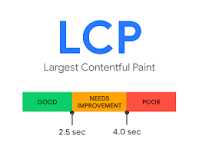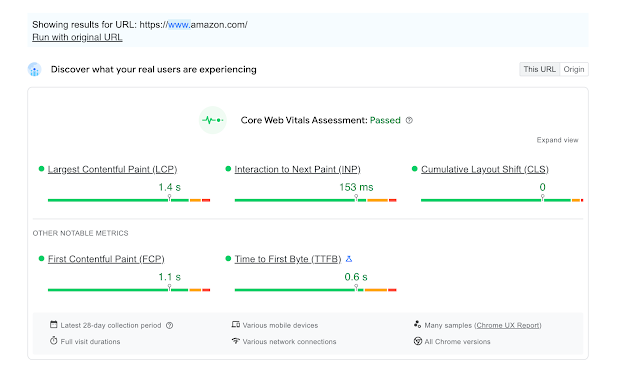LCP (Largest Content Page)
LCP measures the amount of time it takes to load the largest piece of a webpage, which is usually an image or a block of text.
Google’s guidelines classify a LCP measurement as ‘good’ if it is under 2.5 seconds. Faster is always better.
LCP does not measure how long it takes to load an entire webpage, but it provides a good benchmark to indicate how fast a web page is loading. And typically the biggest element on a webpage is its main content, so the time when it loads is often well-aligned with the time when the user perceives that the page has loaded.

FID (First Input Delay)
It is a measurement of the time between a user’s first attempt to interact with a web page and when it responds. FID quantifies how quickly a person can first click on the screen and make something happen.
According to Google’s guidelines, a ‘good’ FID is 100 ms or less.
Example, Arun searches on google, ‘ how to polish your shoes’ , he clicks on a website photo. FID is the time from when he clicked on right arrow to when the photo starts to load. FID does not measure how long it takes for the requested event to actually occur -how long it takes Arun's browser to finish loading the next photo. It only measures the time between the request and when the request starts to be fulfilled.
Difference between FCP and FID is that FCP focuses on the loading page and what’s displayed while FID focuses on how quickly the page responds to the user’s first interaction.
CLS (Cumulative Layout Shift)
It measures how much a web page ‘jumps around’ when it loads. Specifically it measures the largest ‘burst’ of shifts in the page’s layout.
Google’s guidelines say that a good CLS is 0.1 or less.
A layout shift is when page content moves up and down or in any direction from where it originally appeared. In context of metric, a burst is a group of layout shifts that all happen with a second of each other. A Burst can be upto 5 sec long and contain any number of layout shifts.
Example- when a web page opens and is loading, you see a image, then the image suddenly moves further down the page and you end up clicking on the text that loads above the image. So, CLS should be low to have good user experience.

TTFB (Time To First Byte)
It measures the time when a user’s browser makes a request and the browser receives the first byte of data from the server.
Most websites should strive to have a TTFB of 0.8 sec or less. A faster TTFB means a better user experience because it directly impacts how quickly a page can begin loading.
Difference between TTFB and FCB is TTFB is about the server's response time and it measures the time a website takes to load only one byte of data while FCB measures the time it takes for a user to see first content on page and its data can be any bytes or kbs etc. In short, we can say, FCB includes TTFB.


